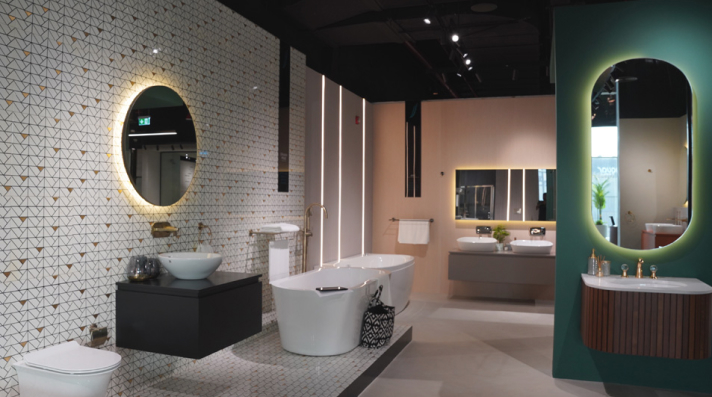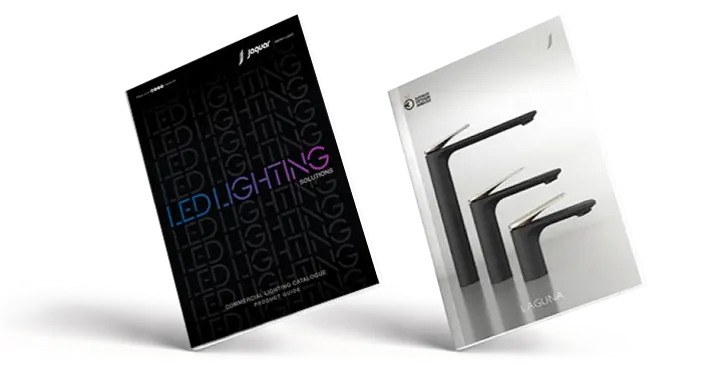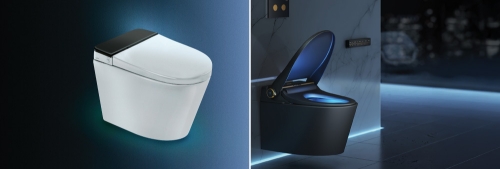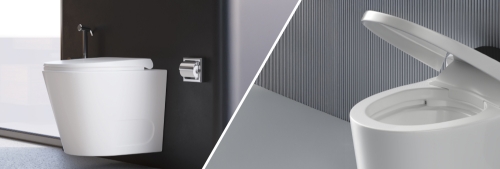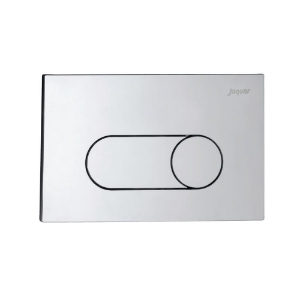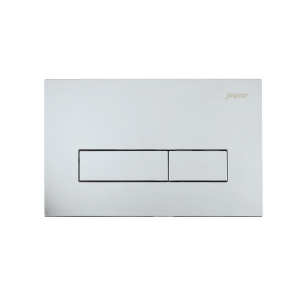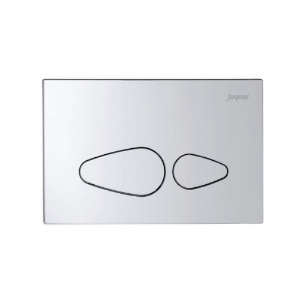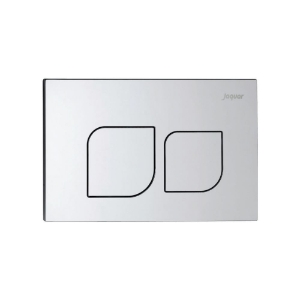Table of Contents
Have you wondered what happens after you flush the toilet? It’s something we do every single day without a second thought, but the toilet flush system is crucial for keeping everything clean and working properly. The toilets we are using at home, offices and public places use different systems of flushing to dispose off waste properly. Whether you’re considering a bathroom upgrade or just want to know how these systems function, this guide is for you!
An effective flush system guarantees that waste is removed correctly, avoids clogging, and even conserves water. Your bathroom's layout, water pressure, and personal preferences will all influence which one is best for you. Let's examine the various flush system types and their operations.
Types of Toilet Flushing System
1. Gravity Flush System
Mid-rangetoilets feature one of the most common and simplest flush systems known as the gravity flush. When you push the button, water from the flush tank flows through into the bowl, and gravity uses the water to push waste down the drain. It’s trustworthy, simple, and low-maintenance.
Water is kept in a cistern, and pressing the button releases the water through the flush valve, and the waste is pushed into the drain system. The flush tank fitting then refills with water once the flush is over for use next time. Gravity flush toilets are basic, inexpensive, and easy to repair, but may use more water than some other types and aren’t always as powerful.
2. Pressure-Assisted Flush System
If you’ve ever used a toilet with an extremely strong flush, it was probably a pressure-assisted system. These are common in public restrooms but are also great for homes that need a more powerful flush.
Within the WC flush tank is an air bladder that compresses as the tank refills. Water literally gets pushed into the bowl with powerful pressure with compressed air every time you press the push button flush valve. It requires less water and is less likely to clog, but it can be loud and may need to be repaired from time to time.
Also Read: How Does a Cistern Work and Which Type is Best for You?
3. Dual-Flush System
Many modern toilets feature a dual-flush system, which is great for saving water. This system gives you two options: one for liquid waste and another for solid waste. A half-flush uses less water, while a full flush uses more, making it an eco-friendly choice.
The flush plates or buttons control how much water is released, and the flush tank fitting quickly refills for the next use. Though it may cost more upfront, it significantly reduces water consumption and is ideal for environmentally-conscious homeowners.
4. Siphon Flush System
A siphon flush system works similarly to a gravity flush but adds a siphon effect for better waste removal. Water from the cistern enters the bowl through a siphon tube, creating a vacuum that pulls waste into the drain. This system is effective in preventing odors and reducing clogs. However, it may not be as fast as pressure-assisted systems.
5. Tornado or Cyclone Flush System
A tornado flush, sometimes called a cyclone flush, uses powerful water jets to create a swirling motion that effectively cleans the bowl while flushing waste away. Unlike traditional flushes, water enters the bowl at an angle, allowing for better cleaning with less water use. This unique design enhances the overall efficiency of the flush, making sure that even stubborn waste is removed thoroughly. The strong swirling action not only improves waste disposal but also reduces water spots and stains inside the bowl, keeping it looking fresh for longer.
This system not only looks stylish but also keeps the bowl cleaner, reducing the need for frequent scrubbing. Since the water moves in a circular motion, it covers more surface area inside the toilet, leading to a more hygienic and effective cleaning process. Additionally, tornado flush systems are often designed with smoother ceramic surfaces, preventing dirt and bacteria from accumulating. While it’s a modern solution that improves flushing efficiency, it can be more expensive than traditional systems. However, the long-term benefits, such as better cleanliness, lower water usage, and reduced maintenance, make it a worthwhile investment for many homeowners and businesses.
Also Read: Advantages Of Installing Sensor Urinal In Restroom
6. Washdown Flush System
Common in European toilets, the washdown flush system pushes waste straight down the drain instead of relying on a siphon effect. The flush tank releases a strong burst of water, forcing waste through a wide drain opening with direct force. This method ensures quick disposal, making it a preferred choice in high-traffic areas where efficiency is key.
This system works particularly well with wall-hung WC designs, offering a sleek and modern look while using less water than traditional siphon-based systems. Since the design allows for a more compact toilet setup, it is ideal for small bathrooms or spaces where plumbing adjustments are necessary. Additionally, the washdown flush is less prone to clogging due to its wide trapway, making maintenance easier. However, it may sometimes leave marks on the bowl if not enough water is used, requiring more frequent cleaning to maintain a spotless appearance. Despite this, its efficiency and simplicity make it a popular choice in many modern households and commercial restrooms.
7. Rear-Flush or Back-Flush System
Unlike standard toilets that send waste through the floor, rear-flush toilets use a back-facing pipe to remove waste. Water from the WC flush tank enters the bowl and pushes waste through a rear pipe rather than a floor drain.
This system is ideal for apartments and modern bathrooms where space is limited. It creates a sleek, minimalistic look but may require special plumbing installations.
Know the details of Jaquar's bath & light range by downloading respective catalogues.
Download Catalogue
Choosing the Right Flush System
When selecting a toilet flush system, consider these factors:
- Water Usage: If saving water is a priority, a dual-flush or tornado flush system is a great choice.
- Flush Power: If you experience frequent clogs, a pressure-assisted or siphon flush system will offer stronger performance.
- Maintenance Needs: Gravity flush systems are the easiest to maintain, while more complex systems may require occasional repairs.
- Bathroom Space & Aesthetic: A wall hung WC with a concealed flush tank creates a modern, space-saving look. Matching your flush plates with your bathroom style enhances overall design.
Also Read: Rimless Toilet vs. Rimmed Toilets: Difference, Benefits & More
Final Thoughts
Understanding how different flush systems work helps you make an informed decision when choosing a toilet. Whether you prioritize water conservation, strong flushing power, or a sleek design, there’s a flush tank system to suit your needs. The next time you press the flush button, you’ll appreciate the technology behind it!
Looking to upgrade your bathroom? Explore Jaquar’s high-quality toilet flush valves, flush plates, and flush tank fitting options for a stylish and efficient experience. The right flush system ensures convenience, cleanliness, and efficiency—all in one smart design.
Stay updated with Jaquar’s latest collections – connect with us on Instagram!
FAQ's:
Q: How does a dual-flush toilet conserve water?
A: It has two flush options—one for liquid waste (using less water) and one for solid waste (using more water), reducing overall water usage.
Q: What are the components of a toilet cistern?
A: A cistern includes a flush valve, fill valve, float, overflow tube, and a handle or button.
Q: What maintenance is required for different toilet flush systems?
A: Regular cleaning, checking for leaks, replacing worn-out seals, and ensuring proper water levels help keep the system working well.
Q: Can I retrofit my existing toilet with a dual-flush system?
A: Yes, many toilets can be upgraded with a dual-flush conversion kit for better water efficiency.
Explore Our Categories:

